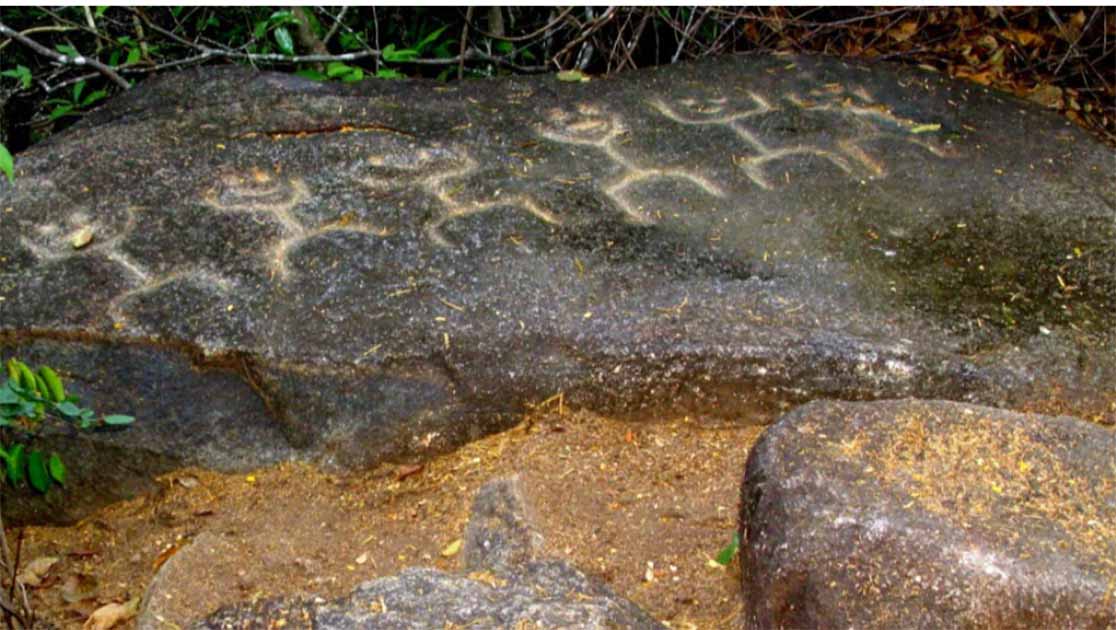Lost Pre-Hispanic City Near Acapulco Yields Astounding Petroglyphs
A find near the Mexican city of Acapulco, in the depths of a sprawling pre-Hispanic city, spanning 334 hectares includes 38 petroglyphs, circular calendars, and a beautiful representation of a rain deity. What has now exceeded all expectations is that, amid the remnants of the forgotten city, archaeologists have unearthed a petroglyph depicting a monkey, strikingly similar to one found in Peru's distant Nazca culture. This singular revelation not only challenges our understanding of the ancient civilizations but also ignites tantalizing speculation about long-forgotten connections between two distinct cultures separated by thousands of miles.
Could the same nomadic groups have traversed the breadth of pre-Hispanic South America and drawn the same Nazca Lines as those in Peru and in other regions too?
Assessing the Ancient Site: Through the Passage of Time
The archaeological site is located just 13 kilometers (8.07 miles) from the bustling center of Acapulco, in a location referred to as ‘La Sabana’. The discoveries have been made in various areas of hilly Cerro de La Bola, where a pyramid associated with the Yope culture once stood. This pyramid is believed to have been used for rituals related to water, rain, and fertility, reports Aristegui Noticia.
- Xipe Totec: This Gory God Shows the Unique Way Aztecs Viewed Fertility and Renewal
- Huge Lost Maya City Has Emerged From the Jungle in Mexico
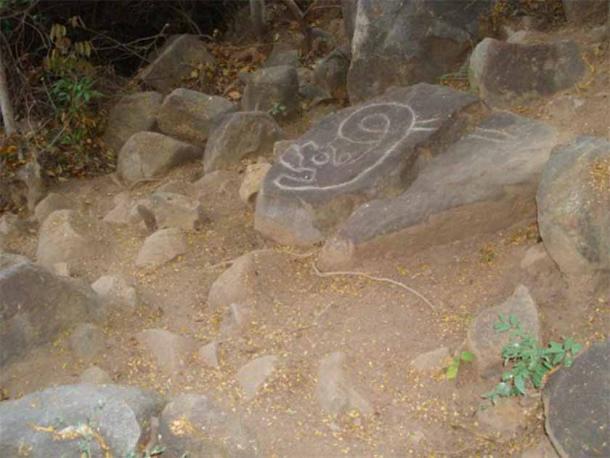
Animalistic images have been found dotted around this area over the years. (INAH)
Scholars have concluded that the petroglyphs on the hill were a form of signage for ancestors. “It was a sign where they had to go and touch that stone, to know that they were sure that the place was made”, emphasized researcher and environmentalist Rubén Mendoza, a key researcher in the area.
The site itself dates back to the end of the Early Classic period, around 400 AD. Subsequent attachments and developments occurred during the Epiclassic period (600-900 AD), and it was eventually abandoned during the early Post-classic period (900-1200 AD).
- Pre-Hispanic Aztatlán Culture Evidence Found Under Mexican Urban Sprawl
- Over 500 Pre-Hispanic Obsidian Mine Shafts Uncovered in Central Mexico
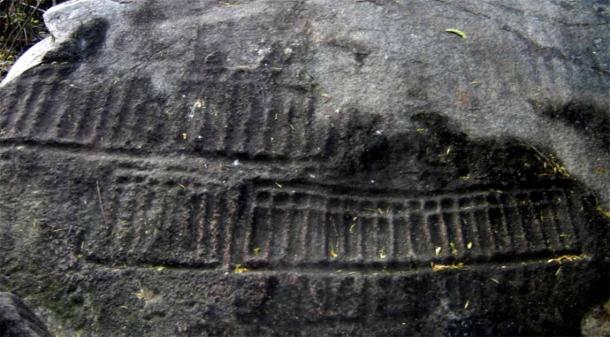
Calendar system record found at the same vast site. (INAH)
According to INAH, the original settlement remained abandoned for several centuries. It was later occupied by the Tezcatec, Tuztec and Yopi people at the end of the pre-Hispanic era.
Despite the passage of time, remnants of the civilization that once thrived in Acapulco still remain, though not in the best condition. Many of these artifacts have suffered significant damage due to the corrosive effects of acids and paint, often left by visitors. Locals consider this area sacred and have collaborated with the National Institute of Anthropology and History (INAH), to protect it from looting and vandalism.
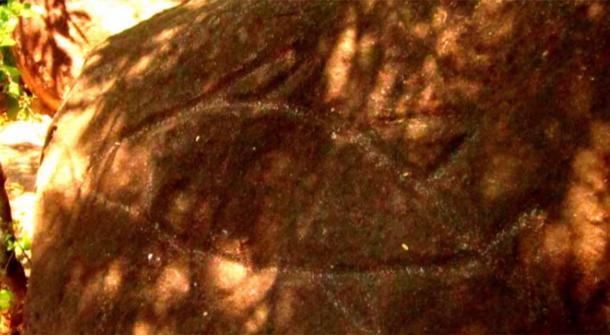
A large fish, whale, or shark representation, reminiscent of the ‘Orca’ found at Nazca. (INAH)
Across Ancient Boundaries? Examining the Petroglyphs
One of the most striking discoveries is a petroglyph featuring a monkey, which bears an uncanny resemblance to figures found in cultures originating in Peru, giving semblance to some new theories of a cultural connection.
This similarity has given birth to the theory that an unnamed ancient traveler(s) could have taken these figures from one place to another! Another theory suggests that there could have been some kind of exchange or contact between different regions of the continent.
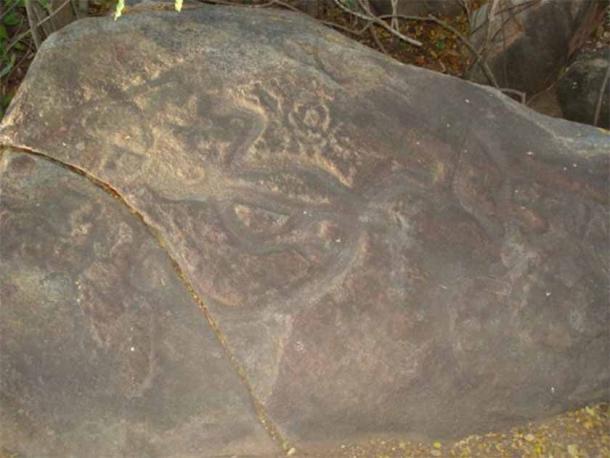
Images with remarkable similarities to the Nazca geoglyphs have been found. (INAH)
Further evidence points to the depictions of a ship manned by unknown figures in various archaeological areas throughout the Acapulco region, suggesting possible connections between different cultures and regions in ancient times, reports Diario de Sevilla.
Talking of an exchange of information between archaeological groups, Mendoza said:
"As fans of archaeology, we have exchanged shapes and figures that we found here in (the state of) Guerrero and they have sent us equal forms that have been found in Peru, in Egypt, in some other places in Latin America."
The Peruvian Nazca Lines: Global Historical Heritage
The Nazca Lines are a series of ancient geoglyphs located in the Nazca Desert of southern Peru, which include over 800 straight lines, geometric shapes, and animal and plant figures, with some of the individual lines stretching for miles. They have been created like enormous line drawings and figures etched into the surface of the desert floor - figures ranging from simple lines and triangles to complex depictions of animals such as hummingbirds, spiders, monkeys, and various plants and flowers.
They were created by removing the reddish-brown iron oxide-coated pebbles that cover the surface of the Nazca Desert and revealing the lighter-colored earth beneath. The removal of these stones created the stark contrast that makes the lines and figures visible from above. They were created by the Nazca culture, which existed in the region from about 100 BC to 800 AD.
Their purpose remains unclear, though some of the geoglyphs do align with key astronomical events, like the solstices and the movement of celestial bodies (much like Stonehenge in Britain, whose purpose also remains unclear). Perhaps they had religious significance too, and at this point in history, astronomy and religion were intertwined.
Top image: A warriors petroglyph found at the La Sabana petroglyph site, lost Pre-Hispanic city near Acapulco city, Mexico. Source: INAH
By Sahir Pandey
References
AN. 2023. They discover symbols identical to those of Nazca, Peru, in the lost city of Acapulco. Available at: https://aristeguinoticias.com/0509/kiosko/descubren-simbolos-identicos-a-los-de-nazca-peru-en-ciudad-perdida-de-acapulco/.
BWFT. 2023. This is the Lost City discovered in Acapulco. Available at: https://www.poresto.net/republica/2023/9/5/asi-es-la-ciudad-perdida-descubierta-en-acapulco-398525.html.
DDS. 2023. A pre-Hispanic lost city discovered in Acapulco. Available at: https://www.diariodesevilla.es/tecnologia/hallazgo-ciudad-perdida-prehispanica-acapulco_0_1827118999.html.
















